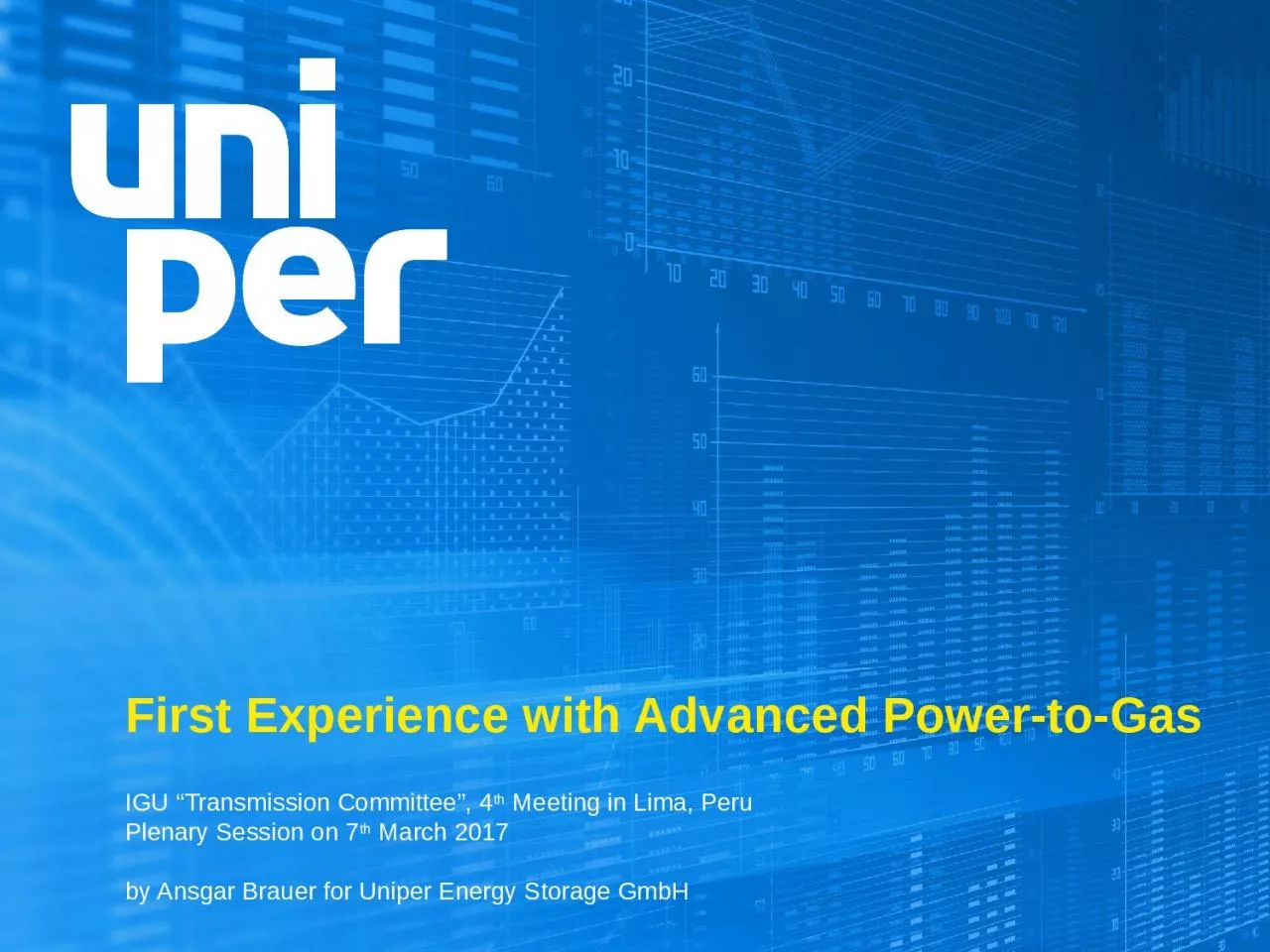PPT-First Experience with
Author : sophia2 | Published Date : 2024-03-13
Advanced PowertoGas IGU Transmission Committee 4 th Meeting in Lima Peru Plenary Session on 7 th March 2017 by Ansgar Brauer for Uniper Energy Storage GmbH
Presentation Embed Code
Download Presentation
Download Presentation The PPT/PDF document "First Experience with" is the property of its rightful owner. Permission is granted to download and print the materials on this website for personal, non-commercial use only, and to display it on your personal computer provided you do not modify the materials and that you retain all copyright notices contained in the materials. By downloading content from our website, you accept the terms of this agreement.
First Experience with: Transcript
Download Rules Of Document
"First Experience with"The content belongs to its owner. You may download and print it for personal use, without modification, and keep all copyright notices. By downloading, you agree to these terms.
Related Documents














